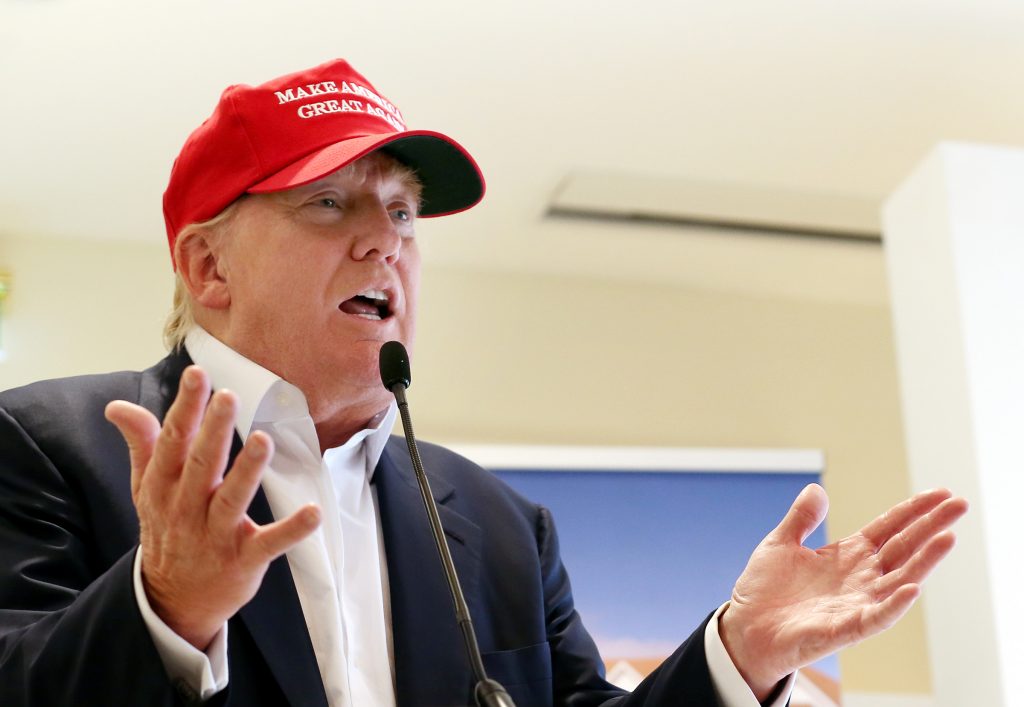The Way Trump Wears His Hat
The Republican nominee for president, Donald Trump, is a self-proclaimed billionaire and (apparently) a successful businessman. Yet he claims to be a champion of the disenfranchised working class. How does he do that? One way is by donning a baseball cap with the phrase “Make America Great Again” on the front.
Ignoring the slogan, though, I’d like to draw attention to the way he wears his hat. The bill is always in the front, pulled down to his eyebrows, and the base of the hat parallels the ground, with the back of the hat higher than the midpoint of the back of his head.
As an anthropologist, I’ve long wanted to conduct a simple experiment. It would look something like this:
I need a sample of 100 people representing a cross-section of America. (Perhaps I can do this experiment on my next trip to the Department of Motor Vehicles, that great leveler of American society.)
I will put standard-issue New York Yankees baseball caps on everyone in the room. I will then prohibit them from removing the hats, or even adjusting them.
While I am somewhat interested in people’s reaction to the logo, I am more interested in how people react to the placement and orientation of the hat itself. Indeed, I suggest that the hats could be devoid of logos and the results of my experiment would still have meaning.
In the first round of the experiment, I will put the caps on in the standard, historical, apparently most-functional way: with the bill centered in the front. I will then record how each of the 100 people reacts. I suspect some people will be just fine, but a majority will be very uncomfortable.
In the second round, I will put the caps on everyone in the room with the bills turned backward, angled down over the neck, such that the back of the cap is open high across the forehead. I will record how people react. Again, I suspect some people will be just fine; a majority will be very uncomfortable.
In the third round, I will put the caps on everyone in the room with the bills turned sideways and to the right. (One could also turn them to the left, but let’s not go overboard.) I strongly suspect that a small and different set of people will now be comfortable; the vast majority will be very, very uncomfortable.
Finally, in round four, I will allow everyone to wear the caps in whatever way they find most comfortable. I posit that everyone, except that small slice of humanity who never wears baseball caps at all, will now be comfortable. Why? They can finally wear the caps in a way that communicates their own perceived self-identity.
At the risk of oversimplification, I offer a few predictions about the reactions of each group.
Older people, and particularly men and women who once served in the military, the police, or who played a lot of baseball, will be most comfortable in round one, wearing their caps à la Trump, with bills forward, low, and curved. For this group, the bill is still functional as a shade and the insignia is an important part of the cap because it serves as a communicative device to establish social identity and status. It identifies one’s tribe.
The next oldest group of people, those who came of age in the late 1980s and 1990s, will be most comfortable wearing the caps backward, in round two. The bill’s function as a shade and the insignia are less meaningful to this group than to the older people. The point, rather, is countercultural. Ironically, this group thumbs its nose at societal norms while maintaining access to the institutions that create and maintain those norms.
The youngest people in the room, as well as those who were raised on the coasts or more urban areas, will be most comfortable with the bill turned either right or left. They are not at all comfortable with the bill turned backward, and certainly not with the bill facing frontward. They work to keep the bill as flat as possible. The bill is not used as a shade device. They may leave the manufacturer’s tag or sticker on the hat. Again, the point of the display is to establish social identity and communicate countercultural tendencies; the logo is not necessarily important.
How does all of this apply to Donald Trump?
Trump has enjoyed a life of privilege and protection from the day he was born. He is most comfortable traveling in a world of celebrity, convenience, and luxury. He can afford the most expensive clothes, food, and cars. Nevertheless, his campaign wants to simply portray him as a man of the people—by having him wear a baseball cap. Using basic anthropological techniques, we see that the way he wears his hat is, in a communicative sense, at least as important as the bombastic “Make America Great Again” slogan on the front.
Trump’s fashion sense is inherently conservative. He almost always appears in public wearing a blue blazer—the standard-issue uniform of his tribe, the business “elite.” With no apparent sense of contradiction or irony, he then uses a baseball cap to project an identity that immediately appeals only to a small and diminishing subset of the American populace and electorate. But it is an effective way to communicate with that tribe and it is clearly the way he feels most comfortable—or at least that is the image he’s selling.
On November 8, we’ll find out how well it worked.



























